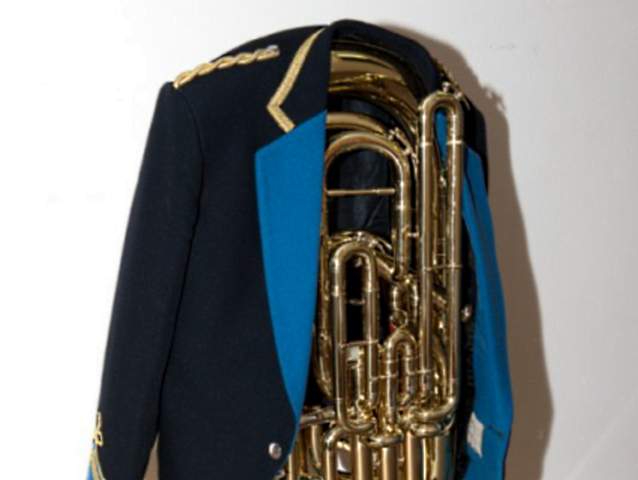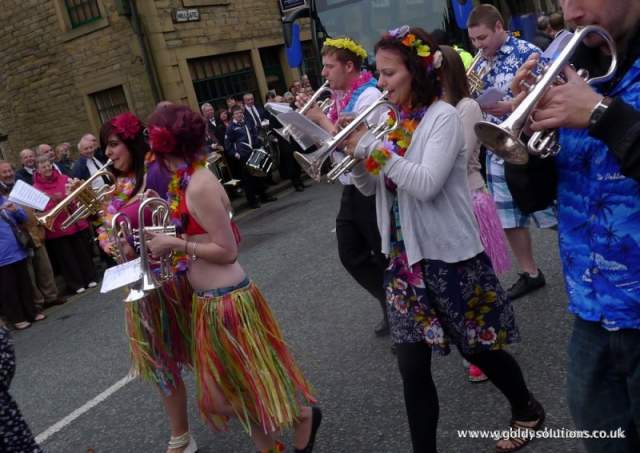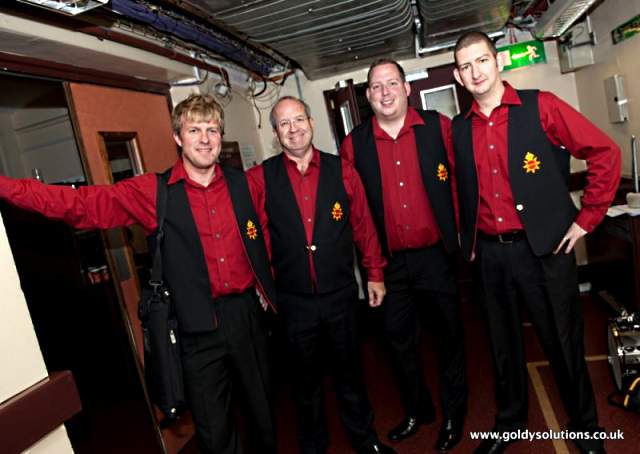
It's a question of uniformity
Sometimes it’s just a question of perception.
We think we have a pretty good idea of how brass bands are viewed in the wider musical world, but when it comes to the great swath of the ‘occasionally interested’ general public, those perceptions can become an eye-opening combination of the enlightening and the occasionally, downright alarming.
20 seconds
First impressions we are told, are everything.
From the all important opening 20 seconds at a job interview, to the initial fleeting glimpse of eye contact on a first date, if things go well then success and happiness await.
Get it wrong though, and you may as well reach for your coat and walk back out the door.
And so it is with brass bands.
Before a single note is blown at a concert, what does the uninitiated member of the audience think of a group of 25 musicians who troop onto the stage with a remit to entertain?
And by uninitiated, I mean the type of person that intermittently attends a brass band event – that all important ‘occasionally interested’ concert or contest goer.
Huxley
These people hold the key to the ‘purely aesthetic’ doors of perception Aldous Huxley may have written about if he ever went to a band contest.
In other words, the very people we need to encourage listening to us in performance in order to experience what the 'modern' brass band is all about; thereby transforming skewed, outdated opinions and increasing our ailing audience numbers.
However, within 20 seconds of appearing on stage, the purely aesthetic dye has invariably been cast.
Dilemma
My own wife encapsulates the dilemma brass bands face as performers in the entertainment business.
After 20 years of marriage, she has seen and heard just about every type of brass inspired concert entertainment ever invented – and after two decades or more her first indelible impression remains succinct and to the point.
"Why do brass bands look so awful?”
It is a point of view that is invariably illuminated by a series of acidic tipped observations on the varying degrees of embarrassing sartorial elegance that is paraded in front of her.
And all this before a single note has been blown.

Not quite the traditional look on Whit Friday even...
Cat's supper
The problem is it’s hard to disagree.
Not every player has the physique of a cat walk model of course, but then again it doesn’t have to mean they look like something the cat has dragged in for a late night supper either.
The traditional quasi military look of a well fitted monkey jacket, razor sharp creases in trousers and well buffed shoes can look splendid even on a bass player with the backside of Samoan prop forward, but when was the last time you saw a full complement of players that both looked as well as played the part?
Your may laugh, yet beneath humour that's about as black as a Black Dyke stage jacket, lies a serious point.
Traditional handicap
Our great traditions have also become our great handicaps – from single test piece contests and early morning draws to closed adjudication and our on-stage appearance.
We continue to look back with pride on our history, but look forward to our future with apprehension.
If we can’t be bothered to at least look professional in performance mode, why should we expect people to part with good money to come and listen to us actually play?
And looking the part has become the most visible example of our growing disconnect with audiences.
Orchestral success
Orchestras have faced a similar dilemma, but have gradually succeeded in overcoming similar misapprehensions; drawing in new concert goers by shedding a stultified image of stuffy, high brow elitism.
And part of that cultural reversal of misguided pre-conception had nothing to do with music whatsoever.
About thirty years ago a new breed of orchestra started to appear.

No bow ties for GUS
No bow ties
The London Sinfonietta for instance appeared on stage in randomly coloured shirts and (heaven forbid!) not a single bow tie to be seen in anger.
The music they played was still contemporary and challenging, but something clearly clicked with their audience - and as other visionary ensembles (and even conductors) started to embrace informality, a new audience slowly but surely began to emerge.
It was a young, open minded and intelligent. It was an audience that was immune to deep rooted pre-conceptions that have hurt us so badly in the brass band world in recent years.
The penguin suits still appear for the more formal of occasions – but for the vast majority of the time, the more relaxed approach brings a sense of inclusiveness.
First City?
Now before the 4BR inbox is flooded with electronic missives proclaiming, “We've been doing that for ages” – (remember First City Brass for instance), I’m talking about a universal sea change to our approach, not just the occasional well meaning experimental polo shirt toed dip into experimental waters.
Thankfully, there is a progressive attitude in some quarters that is in need of further encouragement – even if a good start would just be to get players to iron shirts, wear matching socks and for women not to carry bulging handbags onto the stage.
On the contest platform the traditions of our gold braid, shiny buttons and military style epaulettes can happily carry on – but only if it is carried off with at least some degree of presentational professionalism.
It’s not asking much is it?
Change in perception
The change in perception begins with what we see. What we hear is a subject for another debate entirely.
It is only in breaking down some of the most visible stereotypical hurdles that we will be able to successfully connect with the ‘occasionally interested’ general public once more.
Chris Thomas

4BR Talking Point — A Question of Uniformity
Chris Thomas takes a provocative look at the immediate impression we create on the occasionally interested general public...












